

The prestressing technology that underlies the overpass of uST complex is a proven solution that has been used extensively in the construction industry for centuries. Learn more about what makes this technology so popular and how it helps solve various tasks in our article.
Using prestressing technology, Master Thangtong Gyalpo built 58 suspension bridges with iron chains around Tibet and Bhutan back in the XV century. It may seem incredible, but some of these bridges are still in use today. The next important step was the invention of prestressed concrete structures. Engineer Eugène Freyssinet was one of the first to utilize this method during the construction of the Pont le Veurdre bridge near the city of Vichy in 1911. It turned out to be much cheaper than common stone structures. Nowadays, prestressing technology continues to be used in a variety of fields, facilitating the creation of lightweight, durable, and reliable structures.

Bridge with iron chain. Photo: 11route.com.
All modern reinforced concrete sleepers are created using prestressing technology. These products have a long lifespan, are resistant to mechanical and thermal stresses, and can withstand high loads. They don't rot, they don't swell from moisture, and they don't crack in cold weather. Simplistically, the technology of their production can be described as follows. Before the concreting process, a steel wire is installed in a special mold, which is then stretched. After that, concrete is poured into the mold and additionally compacted using vibration. Finally, the product is transferred to a steaming chamber where the concrete hardens. The sleeper made with this technology has high strength and elasticity, so it will not split under heavy loads.
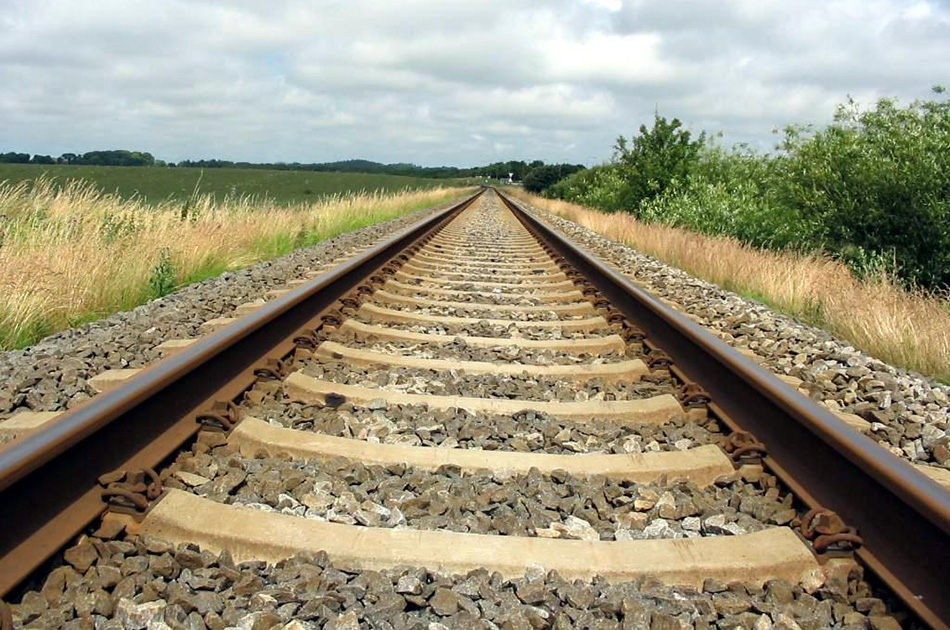
Railtrack. Photo: wikipedia.org.
Prestressing is widely used in the construction of automobile bridges due to its many advantages. Firstly, it requires 1.5 to 2.5 times less metal than for bridges with reinforced concrete structures without prestressing. Additionally, the consumption of concrete and weight of structural components are reduced, simplifying transportation and installation of prefabricated facilities.The use of prestressed reinforcement allows for the construction of bridges using the method of hinged assembly and hinged concrete, significantly reducing construction time.

Forth Road Bridge. Photo: wikipedia.org.
Prestressed reinforced concrete structures are widely used in the construction of television towers. For example, they were used to erect the 554-meter tall TV tower in Toronto, which is the world’s tallest free-standing reinforced concrete structure. The simple cross-section of the trefoil tower turned out to be very convenient for conducting continuous concreting with the placement of prestressed reinforcement. The erection speed during the late 1960s was impressive, with the tower growing by 6 meters per day. It took 26 months in total to complete the TV tower, setting a record for construction speed.
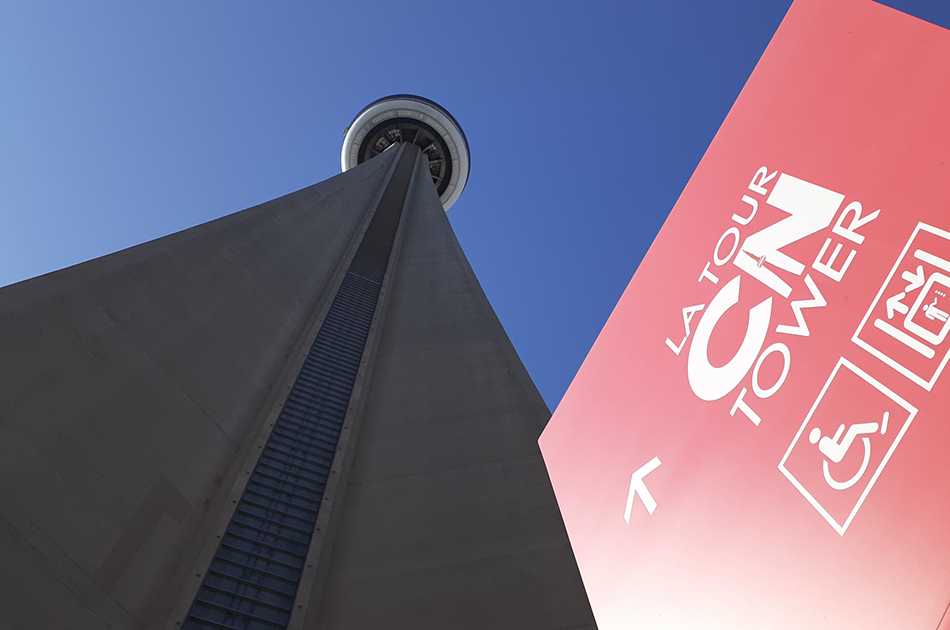
CN Tower. Photo: wikipedia.org.
This is a simple example of how prestressed technology can be used. Thanks to it, the entire vertical load falls on massive anchor supports, preventing the high-voltage line from sagging or breaking. The intermediate supports – the pillars that we see along the entire line – bear mainly horizontal loads from the wind.
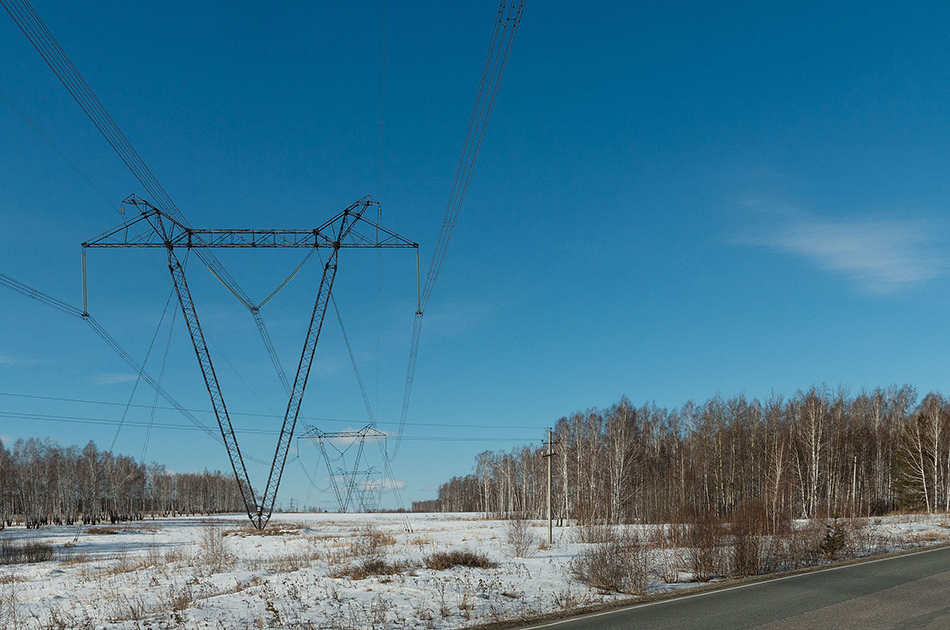
Power transmission lines. Photo: wikipedia.org.
Prestressing technology is widely used in the construction of residential buildings. Depending on the manufacturing technology, the slabs width can reach 3 m, while their thickness – 0.22 m. In such slabs, the stretched reinforcement is tightly bonded to the concrete, which makes them highly resistant to cracking. This, in turn, ensures the strength and durability of the buildings.
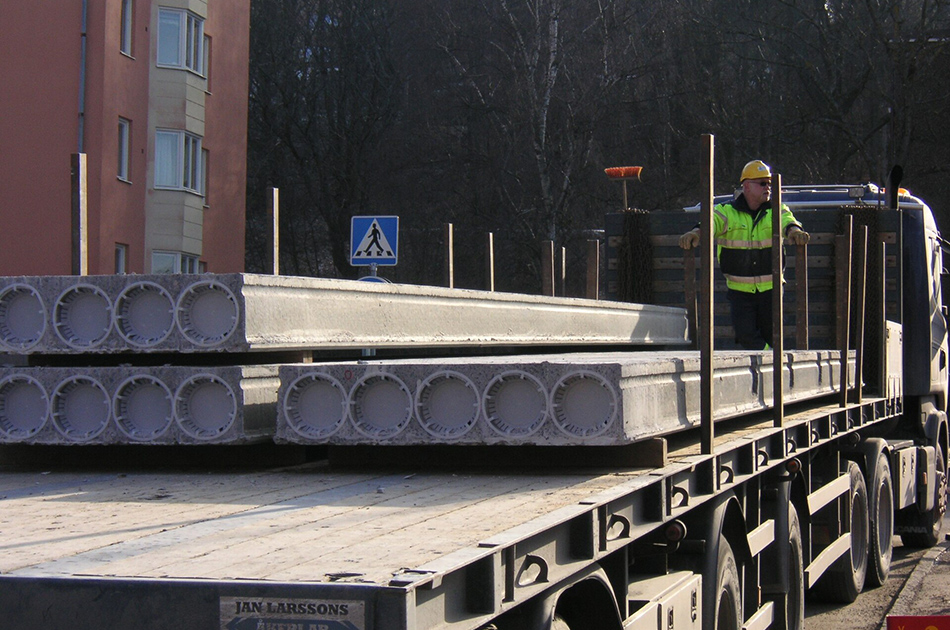
Floor slabs. Photo: wikipedia.org.
When creating the uST track structure, which electric rail vehicles with steel wheels run on, prestressing technology is also used. It allows you to make the track light, very strong and durable. The track structure is based on a string rail, which is a bundle of prestressed load-bearing reinforcement enclosed in a steel body and filled with a special compound inside it. This design can last for more than 50 years.
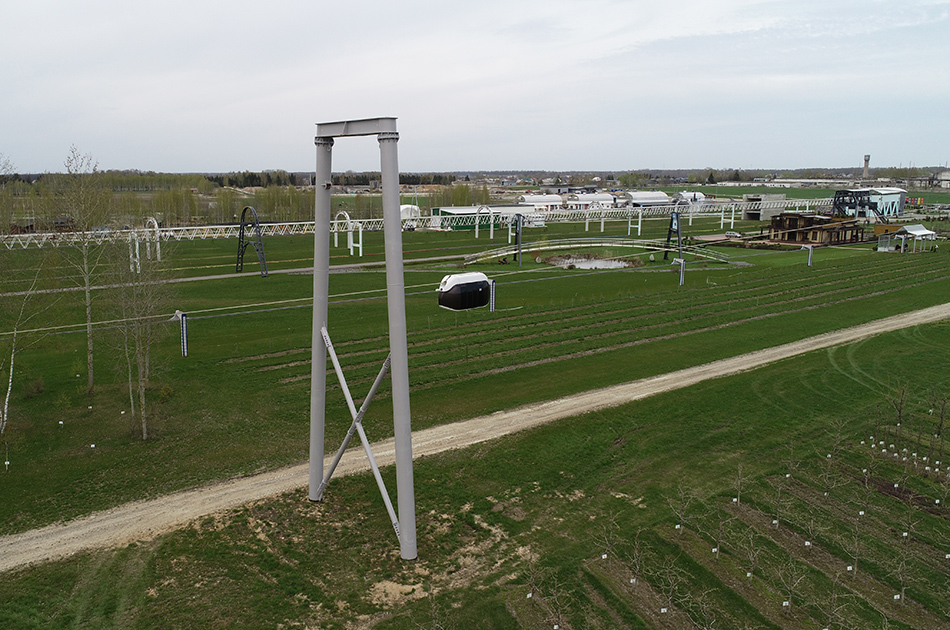
uST track structure.
Thanks to the use of prestressing technology, the entire load falls on the anchoring structures located at the terminal stations of the complex. Therefore, the supporting towers of the track structure experience minor load and a small amount of metal is used for their manufacture. As a result, the uST complex itself is characterized by low material consumption and requires minimal land acquisition.

uBus U4-220.
uST complexes use technology that has been proven effective and reliable for centuries. It has a lot of advantages and has proven itself well in the construction industry. The engineers at UST Inc. were able to perfect this technology and combine it with advanced engineering solutions of the transport sector. As a result of this integration, they created a comprehensive product that can take the transport industry to a fundamentally new level.
This form asks for your consent to allow us to use your personal data for the reasons stated below. You should only sign it if you want to give us your consent.
Who are we?
The name of the organisation asking you for consent to use your information is:
Global Transport Investments
Trident Chambers, P.O. Box 146, Road Town
Tortola
British Virgin Islands
We would like to use the following information about you:
Why would we like to use your information?
Global Transport Investments would like to send this information to company registry, inform you about its news, for refund purposes.
What will we do with your information?
We store your name, address, ID Data, date of birth into company registry. We will share your e-mail & phone number with IT Service (https://digitalcontact.com/), SMS Center (http://smsc.ru). They will add your details to their mailing list and, when it is news update, they will send you an email or sms with details. We store your credit card number for possible refunds.
How to withdraw your consent
You can withdraw the consent you are giving on this form at any time. You can do this by writing to us at the above address, emailing us at the address: [email protected] or by clicking on the unsubscribe link at the bottom of emails you receive.
This privacy notice tells you about the information we collect from you when you sign up to receive our regular newsletter via our website. In collecting this information, we are acting as a data controller and, by law, we are required to provide you with information about us, about why and how we use your data, and about the rights you have over your data.
Who are we?
We are Global Transport Investments. Our address is Trident Chambers, P.O. Box 146, Road Town, Tortola, British Virgin Islands. You can contact us by post at the above address, by email at [email protected].
We are not required to have a data protection officer, so any enquiries about our use of your personal data should be addressed to the contact details above.
What personal data do we collect?
When you subscribe to our newsletter, we ask you for your name and your email address.
Why do we collect this information?
We will use your information to send you our newsletter, which contains information about our products.
We ask for your consent to do this, and we will only send you our newsletter for as long as you continue to consent.
What will we do with your information?
Your information is stored in our database and is shared with with IT Service (https://digitalcontact.com/), SMS Center (http://smsc.ru). It is not sent outside of the Euro. We will not use the information to make any automated decisions that might affect you.
How long do we keep your information for?
Your information is kept for as long as you continue to consent to receive our newsletter.
Your rights over your information
By law, you can ask us what information we hold about you, and you can ask us to correct it if it is inaccurate.
You can also ask for it to be erased and you can ask for us to give you a copy of the information.
You can also ask us to stop using your information – the simplest way to do this is to withdraw your consent, which you can do at any time, either by clicking the unsubscribe link at the end of any newsletter, or by emailing, writing us using the contact details above.
Your right to complain
If you have a complaint about our use of your information, you can contact the Information Commissioner’s Office.
Rate and Comment
You can assess the importance of a particular publication and the level of its preparation. Share your opinion in the comments!